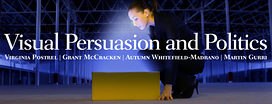Upon reading Grant McCracken’s essay on luxury versus glamour, my thoughts turned to the visibility—or invisibility, as it were—of luxury in relation to the state. Luxury may be a political tool in its promises to the people, but it’s a lousy one when it comes to its use for leaders.
Inconspicuous consumption—an inversion of Thorstein Veblen’s theory of conspicuous consumption, which notes that the well-off will spend on lavish goods as a public demonstration of wealth—has it that the truly wealthy will invest in less-visible goods (such as travel and education) and that it’s actually the strivers who will spend more on things like expensive cars, jewelry, and clothing. Part of this may be because people who have less “deep” wealth feel a need to prove that they have a place at the table of the fabulous, but the other part of the equation is a desire among the affluent to avoid seeming…well, tacky. That is: Among a certain set, white after Labor Day is to 1960 as bling is to today.
To be sure, wealth is still displayed in ways both conspicuous and not-so. But the relationship between the state and inconspicuous consumption shows a continued unease about exactly how much luxury governments should sanction. Russia introduced something akin to a luxury tax in 2012; China considered lowering theirs, then wound up looking toward the opposite direction. Closer to home, New York State had what amounted to a luxury tax on clothing above $110, then applied the tax to all clothing, then raised the luxury bar again, while New York City taxes kept to the $110 rule all along—oh, and don’t forget about the erstwhile “no-tax week,” which once saw high-end outlets across the city suddenly advertising temporary tax exemptions in store windows.
Growing awareness of income inequality in the United States is contributing to the “unseemliness” of conspicuous consumption—and, more importantly, to how we’re seen abroad. America, in order to hold its reputation in the global order as the country you can come to and make it big if you just try hard enough, has to promote an image that involves a degree of conspicuous consumption. But that image mustn’t tip over the line, lest we reinforce the idea of America as a hotbed of materialistic selfishness where McMansions line the streets of one neighborhood while bodies of the indigent line another. (And as a place where the conspicuous consumption of yore has contributed to the environmental crisis, leaving modest little Priuses and such in a position to become one of the ultimate markers of inconspicuous consumption.) So imagemakers are left constantly straddling an invisible line, one that’s hard to detect until it’s been crossed in a manner deemed inappropriate by the public.
It’s no accident that so many examples of this sort of line-crossing revolve around personal appearance, particularly as it relates to campaign spending. See: the much-discussed $4,700 tab for Michele Bachmann’s makeup artist, or even the paltry $300 sum from Mitt Romney’s campaign for “grooming services.” As I argued in my earlier essay, we seek legislators who resemble us on the scale of human attractiveness—that is, we seek the average. But into that calculated averageness comes things like makeup artistry and grooming (including, yes, the highly publicized spending on John Edwards’s “Breck girl” haircuts). We want the work that goes into personal attractiveness to be invisible; we want it to be something that just happens instead of something that’s sought. It’s equivalent to inconspicuous consumption. Look good, but don’t let on what it cost you.
Which brings us back to the question of glamour. As Postrel writes in her book The Power of Glamour, glamour is often confused with the opulence of luxury, and as McCracken illustrates with the example of a (non-ironic) suit-wearer venturing into hipster downtown, the two are quite different. Inconspicuous consumption—which, in its own way, is conspicuous in its supposed modesty—can function as a delineation between luxury and glamour. If it reeks of money, it’s probably a luxury, but depending on how conspicuously you wish to consume, it might well project the opposite of glamour.
At the same time, the ways inconspicuous consumption manifests itself show us that quiet luxuries project a glamour all their own. The Prius comes to mind here, as do social media vacations, caterers in jeans and ponytails, and every “shabby chic” housewares collection ever designed. As for the understated glamour of the state, we only need to take a look at the Oval Office itself. A space that’s always had to balance grandeur with just a hint of austerity, the world’s most famous office has seen red rugs (Kennedy and Nixon), eagle valances (Taft through Roosevelt) to all manners of gold (Ford’s curtains, Reagan’s rug, Clinton’s drapes). But the color scheme of the president to take office during the greatest recession in recent memory? Beige.

